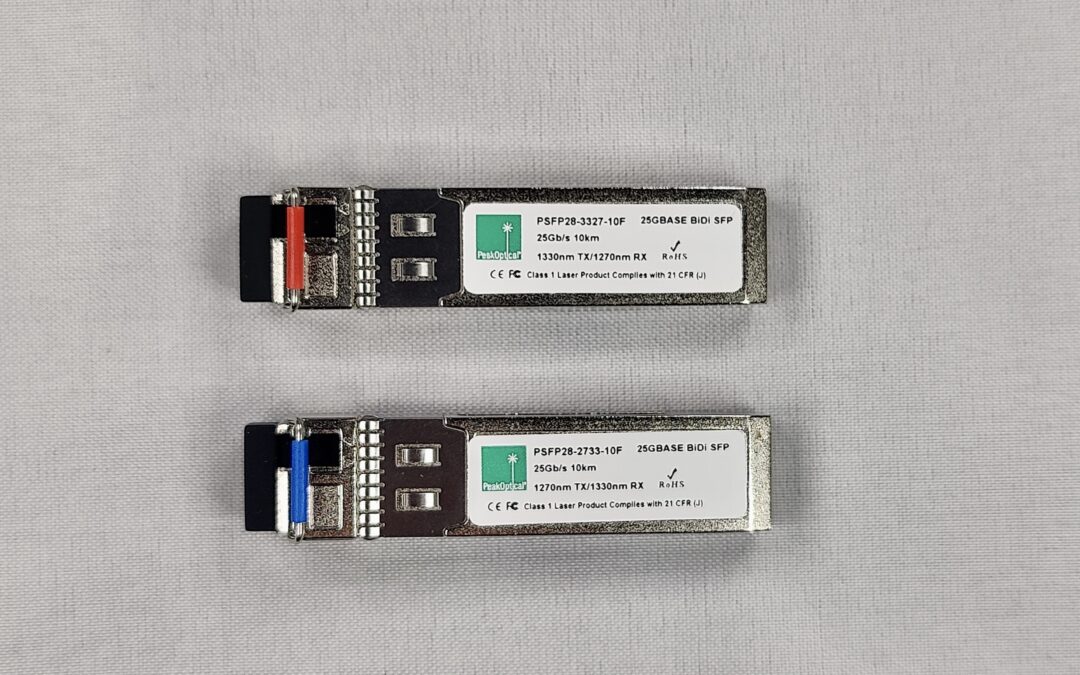25G BiDi transceivers provide a cost-effective solution for boosting network performance without the need for extensive cable upgrades. In this article, we’ll explore what 25G BiDi transceivers are and how they’re transforming high-speed networking.
What Are 25G BiDi Transceivers?
Let’s break it down. The “25G” in their name stands for 25 gigabits per second (Gbps), indicating their lightning-fast data transmission capability. The “BiDi” part is short for Bidirectional, which means they can send and receive data on a single optical fiber strand. This is where the magic happens: double the speed, using half the fiber.
The Magic of Bidirectional Communication
Traditional transceivers use separate fibers for transmitting and receiving data. However, 25G BiDi transceivers are designed to send and receive data on different wavelengths within the same fiber. This innovative approach effectively doubles the capacity of a single fiber, making it a smart and cost-efficient choice for upgrading network speeds.
Where 25G BiDi Transceivers Shine
Here are some key applications:
- Data Centers: Data centers need rapid data transmission to keep up with the demands of today’s digital world. 25G BiDi transceivers optimize existing fiber infrastructure, saving costs and time.
- High-Speed Networks: Industries like finance, streaming services, and cloud computing rely on high-speed networking. These transceivers offer a cost-effective way to meet these demands.
- Cost Savings: Leveraging existing fiber not only saves money but also reduces the environmental impact of laying new cables.
25G BiDi transceivers are changing the game for high-speed networking. They’re cost-effective, efficient, and future-proof, making them a smart choice for businesses looking to boost their network performance. In a world where data rules, these transceivers are leading the way toward a faster, more efficient future.


